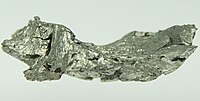
MR relaxation times of agar‐based tissue‐mimicking phantoms
Sign Up to like & getrecommendations! Published in 2022 at "Journal of Applied Clinical Medical Physics"
DOI: 10.1002/acm2.13533
Abstract: Abstract Agar gels were previously proven capable of accurately replicating the acoustical and thermal properties of real tissue and widely used for the construction of tissue‐mimicking phantoms (TMPs) for focused ultrasound (FUS) applications. Given the… read more here.
Keywords: tissue mimicking; mimicking phantoms; relaxation; agar based ... See more keywords

Gestational age-related changes in relaxation times of neonatal brain by quantitative synthetic magnetic resonance imaging.
Sign Up to like & getrecommendations! Published in 2023 at "Brain and behavior"
DOI: 10.1002/brb3.3068
Abstract: OBJECTIVE This study aimed to explore the correlation between T1 and T2 relaxation times of synthetic MRI (SyMRI) and gestational age (GA) in each hemisphere of preterm and term newborns at the initial 28 days… read more here.
Keywords: relaxation values; changes relaxation; brain; gestational age ... See more keywords

Normal values of native T1 and T2 relaxation times on 3T cardiac MR in a healthy pediatric population aged 9–18 years
Sign Up to like & getrecommendations! Published in 2019 at "Journal of Magnetic Resonance Imaging"
DOI: 10.1002/jmri.26886
Abstract: Native myocardial T1 and T2 relaxation times are diagnostic tools used in clinical practice for adult and pediatric populations. Use of a mapping technique requires accurate knowledge of normal ranges in healthy patients, which is… read more here.
Keywords: relaxation; values native; relaxation times; native relaxation ... See more keywords

Simultaneous determination of metabolite concentrations, T1 and T2 relaxation times
Sign Up to like & getrecommendations! Published in 2017 at "Magnetic Resonance in Medicine"
DOI: 10.1002/mrm.26612
Abstract: To simultaneously measure concentration and T1 and T2 values of metabolites in the human brain in a single scan session. read more here.
Keywords: simultaneous determination; medicine; concentrations relaxation; determination metabolite ... See more keywords

Concentration and effective T2 relaxation times of macromolecules at 3T
Sign Up to like & getrecommendations! Published in 2020 at "Magnetic Resonance in Medicine"
DOI: 10.1002/mrm.28282
Abstract: We aimed to investigate the concentration and effective T2 relaxation time of macromolecules assessed with an ultra‐short TE sLASER sequence in 2 brain regions, the occipital and frontal cortex, in both genders at 3T. read more here.
Keywords: effective relaxation; relaxation times; times macromolecules; concentration effective ... See more keywords

In vivo T1 and T2 relaxation time maps of brain tissue, skeletal muscle, and lipid measured in healthy volunteers at 50 mT.
Sign Up to like & getrecommendations! Published in 2021 at "Magnetic resonance in medicine"
DOI: 10.1002/mrm.29009
Abstract: PURPOSE Low-field (B0 < 0.1 T) MRI has generated much interest as a means of increased accessibility via reduced cost and improved portability compared to conventional clinical systems (B0 ≥ 1.5 Tesla). Here we measure… read more here.
Keywords: relaxation; vivo relaxation; relaxation times; muscle lipid ... See more keywords

3.0 T relaxation time measurements of human lymph nodes in adults with and without lymphatic insufficiency: Implications for magnetic resonance lymphatic imaging
Sign Up to like & getrecommendations! Published in 2018 at "NMR in Biomedicine"
DOI: 10.1002/nbm.4009
Abstract: The purpose of this work was to quantify 3.0 T (i) T1 and T2 relaxation times of in vivo human lymph nodes (LNs) and (ii) LN relaxometry differences between healthy LNs and LNs from patients… read more here.
Keywords: human lymph; relaxation; lymph nodes; lymphatic insufficiency ... See more keywords

High Periventricular T1 Relaxation Times Predict Gait Improvement After Spinal Tap in Patients with Idiopathic Normal Pressure Hydrocephalus
Sign Up to like & getrecommendations! Published in 2022 at "Clinical Neuroradiology"
DOI: 10.1007/s00062-022-01155-0
Abstract: The diagnosis of idiopathic normal pressure hydrocephalus (iNPH) can be challenging. Aim of this study was to use a novel T1 mapping method to enrich the diagnostic work-up of patients with suspected iNPH. Using 3T… read more here.
Keywords: gait improvement; relaxation times; idiopathic normal; relaxation ... See more keywords

Quadriceps weakness associates with greater T1ρ relaxation time in the medial femoral articular cartilage 6 months following anterior cruciate ligament reconstruction
Sign Up to like & getrecommendations! Published in 2018 at "Knee Surgery, Sports Traumatology, Arthroscopy"
DOI: 10.1007/s00167-018-5290-y
Abstract: PurposeQuadriceps weakness following anterior cruciate ligament reconstruction (ACLR) is linked to decreased patient-reported function, altered lower extremity biomechanics and tibiofemoral joint space narrowing. It remains unknown if quadriceps weakness is associated with early deleterious changes… read more here.
Keywords: strength; relaxation; relaxation times; aclr ... See more keywords

Lumbar intervertebral disc diurnal deformations and T2 and T1rho relaxation times vary by spinal level and disc region
Sign Up to like & getrecommendations! Published in 2022 at "European Spine Journal"
DOI: 10.1007/s00586-021-07097-4
Abstract: Magnetic resonance imaging (MRI) is routinely used to evaluate spine pathology; however, standard imaging findings weakly correlate to low back pain. Abnormal disc mechanical function is implicated as a cause of back pain but is… read more here.
Keywords: diurnal deformations; lumbar; spinal level; relaxation times ... See more keywords

MRI T2-mapping of lumbar facet joints is effective for quantitative evaluation of lumbar instability in patients with degenerative lumbar disorders
Sign Up to like & getrecommendations! Published in 2022 at "European Spine Journal"
DOI: 10.1007/s00586-022-07119-9
Abstract: To analyze T2 relaxation times of the facet joint by MRI T2-mapping in patients with degenerative lumbar disorders (DLD), and to determine the correlation with lumbar instability in radiographs. We conducted a T2-mapping of the… read more here.
Keywords: lumbar facet; lumbar instability; lumbar; instability ... See more keywords